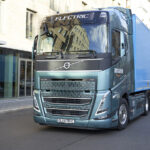Do we really need costly dashcams?
Do we really need costly dashcams?
Dashcams are all very well, but sophisticated ones come with hefty price tags. Are they really necessary? Michael Bloom, head of marketing for SmartWitness at Sensata Technologies, doesn’t think so.
Ever since video telematics vendors began incorporating artificial intelligence (AI) into their products, both the size and the cost of dashboard cameras have risen beyond the point of no return for many fleet managers.
Today, some commercial dashcams are roughly the size of two stacked external hard drives and are priced upwards of R33 000. This not only shrinks driver visibility on the windshield but also inflates the cost, making them unaffordable for many operators. This in turn limits video telematics adoption that could improve safety, prove fault in an accident, and reduce crash-related repair and litigation expenses.
The culprit isn’t AI itself, but rather how it is being deployed by many dashcam suppliers.
Many solution providers are riding the coattails of the edge computing boom by engineering their devices to perform virtually all AI processing on the edge (in this case, on the camera). The “AI on the edge” buzz phrase touting this high edge/low cloud design makes for a good marketing spin, but in practice, it increases the footprint of the camera, the price tag, and even replacement needs. This is due to several factors:
- Extra space is required to accommodate AI-related processors, graphics processing units (GPUs), and heat sinks needed to prevent overheating from demanding AI operations.
- The more AI functions on the camera, the larger the size, because more processing horsepower is needed to execute the individual algorithms associated with each function.
- The extra components double, triple, or even quadruple device costs, while also increasing lead times for product availability in today’s supply chain-challenged environment.
- Upgrades to take advantage of new edge-based AI capabilities can be achieved only by replacing the camera, limiting the device lifespan as well as increasing deployment expenses over the long term.
None of this is necessary, because 90% of AI features do not need real-time camera-based processing and driver alerts to ensure safety. Only a handful of AI functions, therefore, need to be deployed on the camera itself. The rest can instead be handled in the cloud, minimising the need for extra components, shrinking dimensions to a more manageable size, saving hundreds of dollars per camera, and even lengthening replacement intervals.
Most AI-enabled dashcams, for example, use edge-based AI for functions such as detecting smoking or eating activity, comparing posted speed limits to vehicle speed, and recording lane changes over dotted lines. Fleet managers may want this information for rule enforcement, score-carding and/or post-event driver evaluation and coaching, but processing the video on the edge and alerting the driver to these kinds of rule violations while they’re on the road is unlikely to prevent an accident. That means there’s little reason to build them into the camera.
On the other hand, advanced driver assistance system (ADAS) functions such as detecting solid-line lane departures, tailgating, and imminent forward collisions must be processed immediately so that drivers can be warned without the delay involved in sending data to the cloud for interpretation. That lag time – even though it’s typically not more than a few seconds – increases the risk of a serious or even fatal accident. These kinds of features do belong on the edge.
That’s why Sensata Technologies utilises a “high cloud/low edge” strategy in designing our commercial dashcams. All of our AI-enabled cameras process only the most critical AI functions on the edge for real-time intervention. The rest of the data captured by the camera is pushed to an AI engine in the cloud for analysis and reporting. As far as we know, we are the only provider that has adopted that policy, but the impact on the final product is dramatic.
Our industry-first KP2 dashcam, for example, clocks in with a 31% smaller windshield footprint, half the height, and one-third the cost of a comparable edge-focused product. That adds to the benefits of the KP2’s unique modular design, making it possible – for the first time – to convert a road-facing dashcam to a dual road- and driver-facing device without purchasing new two-way cameras or standalone driver-facing units.
The message is this: bigger is not better when it comes to AI-powered telematics cameras. Smart engineering pays off by reducing dashcam size and cost, enabling more fleets to afford benefits such as fewer accidents, fewer drivers falsely accused of causing a crash, less money spent on legal fees, and fewer nuclear verdicts.
Cameras costing R33 000 may be beyond your budget, but smaller and less expensive alternatives can deliver the same return on investment. That’s good news for fleet managers looking to bolster their safety record as well as their bottom line.
- The original version of this article was first published as a SmartWitness blog. You can read it here.
Published by
Focus on Transport
focusmagsa




